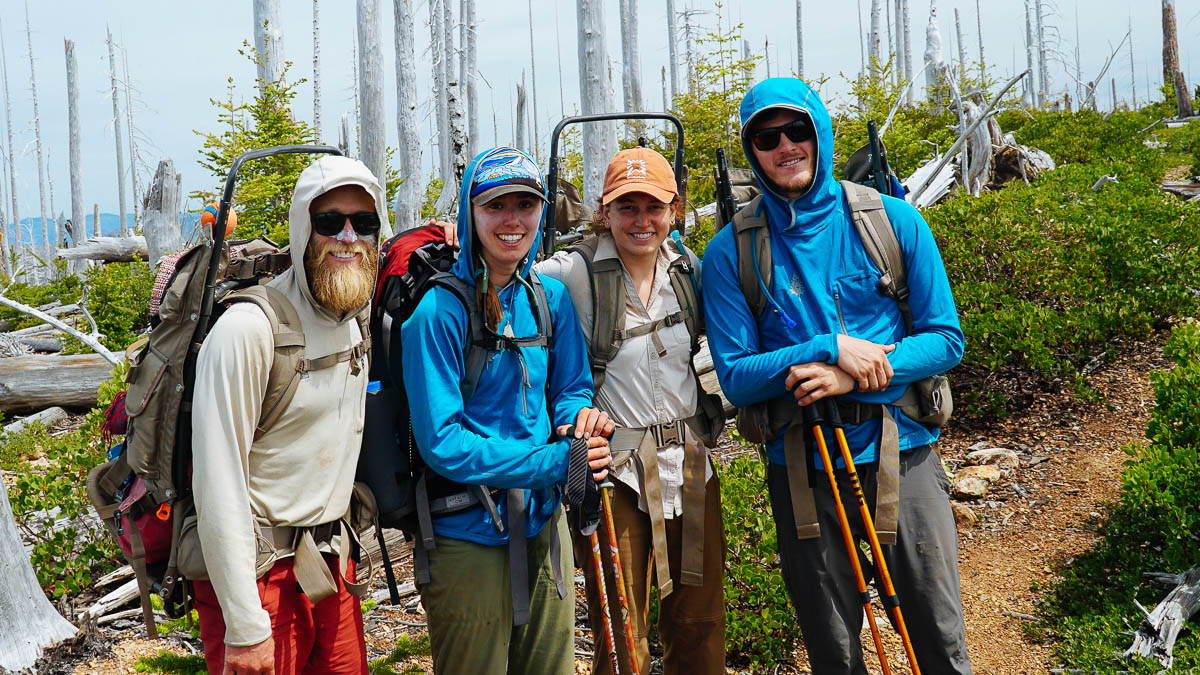This past June, I hiked into Carter Creek for Northwest Rafting Company to ready gear for an Upper Chetco river trip in the Kalmiopsis Wilderness. Along with three other guides, we transported inflatable kayaks and camping gear nine miles down to Carter Creek, a beautiful stream that merges into the Chetco river.

I have a lot of respect for the area, in many ways it epitomizes the idea of wilderness as a remote, pristine, and unique environment. Located around the Klamath mountains in Southern Oregon, the Kalmiopsis is difficult to access both in terms of recreation and rescue. It’s steep mountains and technical rivers are a rewarding challenge but simultaneously require real preparation. It contains three wild and scenic rivers (a designation by government that protects certain stretches of valuable and remarkable rivers) including the North Fork of the Smith, the Chetco, and the Illinois. The Kalmiopsis Wilderness has complex geology which creates a unique biology. Peridotite and serpentinite-based soils contain heavy metals and at the same time are weak in many of the more abundant and necessary nutrients such as nitrogen. Certain plants have adapted to these conditions and are rarely if ever found anywhere else in the world. As recently as 2008, a new species of insect (midge) has also been discovered in the area.
The hike itself is very exposed due to multiple lightning-caused fires that have burned either parts or the entire Kalmiopsis Wilderness including the Biscuit fire in 2002 and most recently the Chetco Bar fire in 2017. But the stark landscape of charred trees, bare soil, and green serpentinite rock was offset in many places by abundant and beautiful wildflowers, such as the Kalmiopsis flower which is the area’s unique namesake. While stopping for water at Bailey’s Cabin, we found Darlingtonia, a carnivorous pitcher plant eating a grasshopper. Fire is merciless combined with the steep terrain, but succession was obvious. Even though it will take decades, the wilderness is slowly recovering and the species that rely on a hot reset are taking advantage of the opportunity. I found myself thankful for the fire, as close human development and private land combined with the lack of access meant that suppression would have eventually created a hotter and more violent natural phenomenon, putting more people and animals in danger.
Our steep descent into Carter Creek (bring hiking poles!) was rewarded by the Chetco River, the longest pristine stretch of river in Oregon. This incredibly special river is a chance to explore. Turn over rocks and find macroinvertebrates, swim in perfectly clear water, or run its boulder gardens on a river trip. After the effort spent to get to the river, it was worth it and rejuvenating. I hope that many more can plan a trip into the Kalmiopsis, and that I can visit again to take advantage of watching a forest change and regrow in its most natural and untouched state.
Here are some resources if you are curious about planning a trip and/or the ecological and geological qualities of the Kalmiopsis Wilderness.
Route Descriptions:
http://mailtribune.com/oregon-outdoors/upper-chetco-swim-is-worth-the-tough-hike
http://www.siskiyoumountainclub.org/trail-report-trans-kalmiopsis-route/
Official and Important Information:
https://www.fs.usda.gov/recarea/rogue-siskiyou/recarea/?recid=77582
https://www.wilderness.net/NWPS/wildView?WID=287
Native Plant Society of Oregon Journal Article on the Kalmiopsis Flower Discovery:
http://www.npsoregon.org/kalmiopsis/kalmiopsis_v01.pdf#page=3
A New Species:
http://www.bioone.org/doi/full/10.4289/0013-8797-110.4.978
Technical USGS Geologic Map:
https://ngmdb.usgs.gov/Prodesc/proddesc_6681.htm
